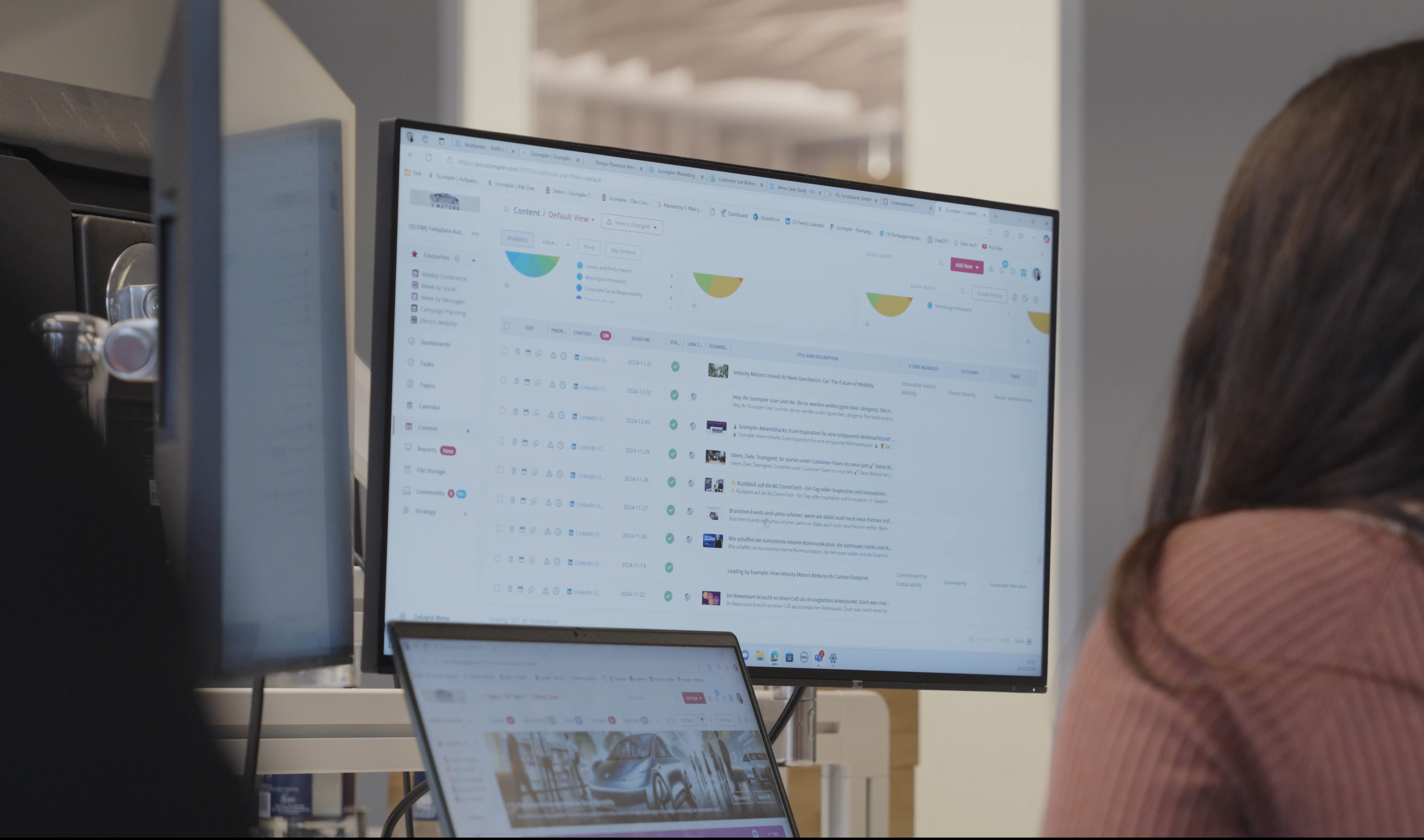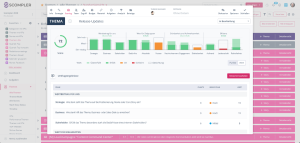The path of a theme
Focus on topic analysis: how data-driven communication works
Data-based and strategic topic planning is still not an integral part of content work in many communications departments. However, data and analyses help to find, evaluate, prioritize and frame topics.

As Head Partner & Solutions, Michael Schmitz advises customers of Scompler on how to successfully operationalize their content strategy

As the founder of CRTN, Paul Ledder makes complex issues understandable - whether it's new processes in communications departments, channel landscapes or target group architecture.
With scoring and scoping for strategic topic planning
In strategic topic planning, topics are prioritized so that communication remains focused. But how do we know what the important topics are? And how do we ask them?
45 percent of respondents in a Scompler webinar with CRTN stated that they still see a need for optimization in their topic focus. Just as many say that they have gaps in the strategic foundations for successful topic planning. Many communicators in their companies also see room for improvement in topic analysis (39%) and topic identification (34%). However, in order to establish strategic topics as guidelines for successful content, communicators need the necessary insights and data.
The path of a theme
Paul Ledder designed exploratory topic analysis and implements it in his consulting practice. In a joint webinar, he and Michael Schmitz, Head Partner & Solutions at Scompler, presented both the theoretical foundations of data-driven topic planning and showed the concrete implementation of a topic analysis at a large German insurance company.
The objective: Only the most relevant topics are included in the planning, which leads to clear and focused communication. These topics should stand up to scoring according to strategic parameters such as stakeholder benefit or scalability. After evaluating the topics, communicators should define their scope. This enables them to design their communication with central messages, ensure that all measures contribute to the overarching corporate goals and allocate their resources efficiently.
The recording of the webinar

Topic identification
The starting point is always an idea that arises from monitoring or new products, for example. In order for communications departments to achieve data-driven topic planning, CRTN has identified various steps in its many years of consulting experience.
At the beginning, the editorial team checks the initial research for trends and different topic perspectives and selects key topics. Keyword analyses and social listening can also help to evaluate the strategic potential of the topics from a user and competitive perspective.
After the topic level, the explorative topic analysis at story level examines which specific stories and topic spins are possible, what the context is for the target group and how much potential the topics have to contribute to achieving the goal.
Topic scoring
Most companies have a wide range of issues. However, due to limited resources, they cannot talk about all of them. This makes prioritizing the issues all the more important. "Strategy doesn't just mean defining what you do, but above all defining what you don't do," recommends Mirko Lange, founder of Scompler.
The relevance of the topics is evaluated using a scoring system. Here, communicators can weight their topics according to strategic parameters - such as the value contribution for the company, visibility or efficiency - and map them in the strategic content management software Scompler .
Parameters for topic scoring
Exemplary parameters for weighting topics
Business: How much does the topic help us to achieve our business and sales goals?
Benefit: How well can we fulfill the need for the topic better than others?
Scalability: How often and for how long can the theme be used?
Effort: How easy is it to achieve a lot with little effort in this area?
Weighting based on these parameters helps to identify the most important topics and use resources efficiently. The result: better rated topics produce more output than lower rated ones.
Topic scoping
Based on the topic score, the appropriate scope determines the budget and the extent to which a topic is positioned and played out. The scope of scoping is diverse and can range from a single press release to a complex quarterly campaign on various channels. A division into story packages of different sizes can help to divide topics according to workload, budget, schedule, substance, number of channels used and objectives. This makes optimal use of resources, minimizes wastage and achieves the best possible results.
Implementation and content production
After the evaluation, the topics are brought to life by defining specific stories. In the next step, communicators take the channel perspective and consider which posts should be created for which channel and what their special features are. Communicators should continuously integrate data insights and dashboards so that they can also approach the implementation of individual amounts in a data-driven manner.
In the content solution from Scompler , departments can integrate their keyword analyses, social listening results and the parameters for topic scoring and thus take them into account when producing the individual content pieces. Even after publication, Scompler displays the analyses of the articles, including via the integrated social media channels or integrations such as Google Analytics or Landau Media.






